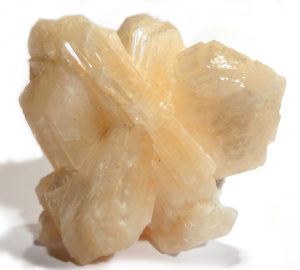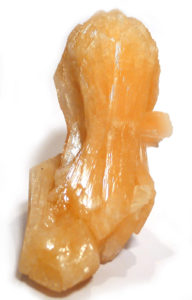Properties:
Zeolites are a group of more than fifty water-containing silicates with an open structure which allows easy movement of ions between the cavities, meaning zeolites can trap or exchange the ions moving through them. Some zeolites have the ability to exchange sodium ions for calcium ions present in hard water, and are extensively used in water softeners. Others can act as molecular sieves, and are used in petrol and gas refining. Silica gel, used as a desiccant and dehumidifier, is a product of analcime, one of the zeolites. Common zeolite minerals include natrolite, heulandite, scolecite, stilbite, and scapolite. Healing qualities are similar between members of the group. Most contain sodium and/or calcium, making them highly cleansing, in addition to the group’s refining and purification qualities. Many are piezo- and pyroelectric, so encourage transmission of energy. In addition to the general properties of the zeolites: In spite of its obvious connection (through the white colour) with the Crown Chakra, stilbite is also very grounding, its energy flowing down the line of the body via the Heart. It is excellent for work on a psychic or spiritual level, including astral travel, while allowing the user to remain present and with feet firmly rooted to the ground. It induces a stillness leading to deep meditation. It is also believed to be strongly detoxifying, and has been used to treat poisoning. Stilbite can also strengthen ligaments, and treat laryngitis and loss of taste.
Attributes:
- Chemical Formula: NaCa4[Al8Si28O72].nH2O
- Birthstone: Secondary birthstone for Aries
- Chakra: Crown
Mineralogy:
- Stilbite forms in mafic igneous rocks, granite pegmatites, gneisses, schists, and hot spring deposits. It is a sodium calcium aluminosilicate hydrate. Mineralogists have further subdivided it into stilbite-Ca (with a high calcium content) and silbite-Na (when sodium is dominant). Colouration is usually colourless to white or salmon-pink. It is also yellow, brown, or red, and (occasionally) green, blue or black. Crystals are tabular and usually twinned, but it can also form as bow tie-shaped aggregates (actually known as such in mineralogical terms). Stilbite is used in the petroleum industry for refining.
History and Tradition:
- Named in 1797 by Jean Claude de la Métherie, from the Greek στιλβη stilbein, to glitter or shine; or stilbe, a mirror, alluding to its pearly or vitreous lustre. Originally called zeolite in 1756 by Axel Cronstedt – though inconsistently since then. There are no traditions associated with this mineral.


Video Guide:
Save
